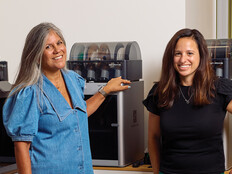Makerspaces Pave the Way for Inclusive Classrooms
These consciously created spaces where students are free to pursue their own interests are most often linked to STEM, but it doesn’t end there. “We hold a belief system that makerspaces inspire literacy proficiency,” says Ginger Christian, principal of Anderson Elementary in Bristol, Tenn. “They engage students in a way that requires investigation of literacy skills.”
In fact, not all makerspace tech has to be directly related to STEM — the app Book Creator, for example, allows students to create all sorts of digital books, including instructional manuals for experiments done in traditional STEM spaces. The program, which is integrated with Google’s Chromebook App Hub, recently added over 200 updates to improve accessibility from a dictation feature that supports 120 languages to different visual display modes and fonts for students with dyslexia and visual impairments.
Still, STEM reaps a solid share of the benefits makerspaces bring to schools. These spaces have tech on hand that helps educators tailor instruction for students with varying educational needs — programming tools such as littleBits code kits; building sets such as KEVA Planks and Tegu blocks; and digital fabrication tools such as 3D printers.
“Student choice is so powerful,” Christian says. “When students are engaged in work that previously they did not want to be engaged in, they’re invested. They’re building with their own hands.”
READ MORE: Learn how makerspaces are transforming K–12 schools from our FETC 2020 coverage.
Esports Boost Student Engagement and Collaboration
With more schools embracing the possibilities of esports in career and technical education, the field is poised to grow in 2020. The National Association of Esports Coaches and Directors is launching a new certification program in March 2020, helping schools hire appropriate coaches and offering professional development courses. Esports programs can assist schools looking to capture the attention of otherwise disengaged students, particularly in STEM. These programs also offer an opportunity for both boys and girls at all levels of physical ability to play together, which other sports programs are missing.













